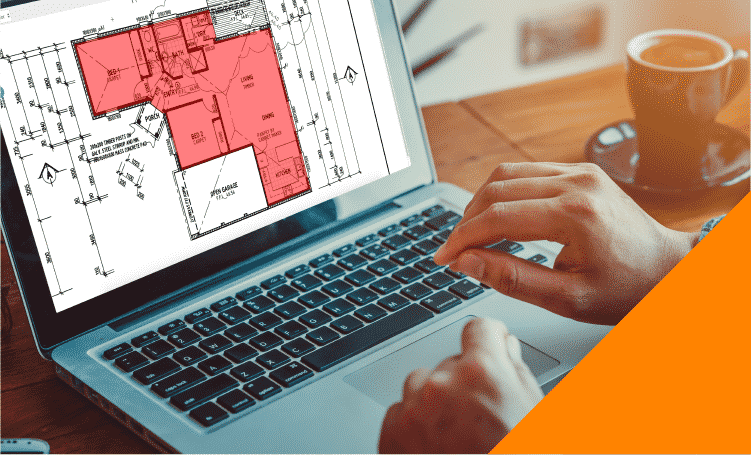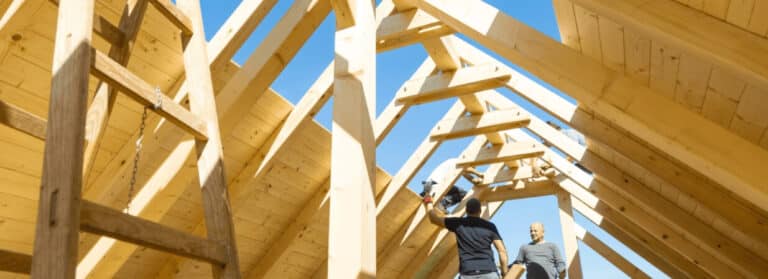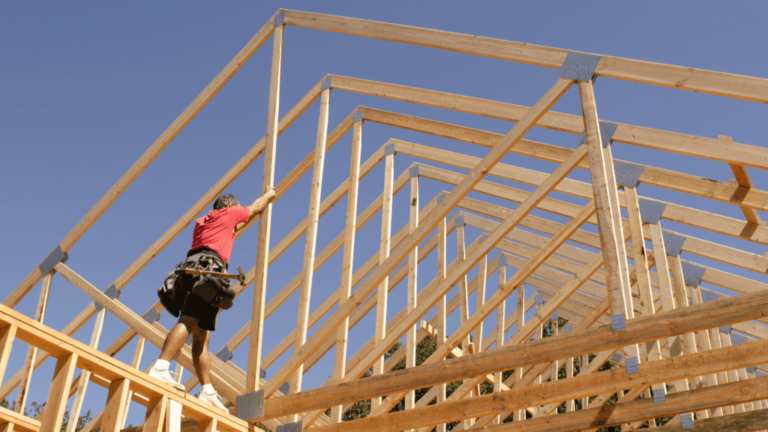Construction cost estimates provide the backbone for construction project budgets and bids. Owners rely on both rough and detailed estimates to determine if projects are feasible and to know the amount of financing they will need to make their project a reality. How you estimate and conduct your project management can affect the accuracy of the budget for construction costs and that budget can reveal as early as possible if the job will deliver a satisfactory result for the homeowner and turn a profit for you, the builder.
“Providing accurate and detailed construction cost estimates early in the planning and design process allows you to create a roadmap for a successful project,” Marcene Taylor, president of construction estimating firm Marcene Taylor Inc., said.
There are many ways to develop a cost estimation for a project, depending on the amount of information and data you have about the project.
From preliminary estimates based on past projects, to detailed line-item estimates based on the construction bid documents, estimates can range from a ballpark figure to a well-developed proposal used to create formal bid estimates and customer contracts.
We’re going to look at the types of construction estimates, how they are developed, and how software can help you better meet your customer’s expectations.
Types of construction cost estimates
There are five main types of construction cost estimates: preliminary, detailed, quantity, bid, and control. Each is used for a different purpose at a different time in a project lifecycle.
Preliminary cost estimation
A preliminary estimate, also called an abstract cost estimate, approximate cost, or budget estimate, is used in the early phases of a project, usually before design documents have been completed.
Project owners rely on preliminary estimates to help them have a rough estimate that helps them decide whether a project is financially feasible or not. They may use the preliminary estimate to determine how much financing they’ll need or if they can afford the project with existing funds. Often a preliminary estimate helps determine if a project will be undertaken or not before they involve too much of your time.
A preliminary estimate is usually based on the costs you’ve experienced on similar projects that you have recently completed. For example, a general contractor may provide a preliminary estimate for a new office building by looking at past office buildings of similar size. This kind of estimate is prepared with the understanding that a revised estimate with more specific cost detail must be completed before construction can begin.
Detailed estimate
As its name implies, a detailed estimate involves breaking down the project scope into smaller unit prices that can be priced individually. It includes costs for the materials, equipment and labor required to complete the project. Adding these gives you a total project cost.
In order to provide a detailed estimate, you need a design that is complete so you or your estimator can quantify the exact work that has to be done.
“An estimator needs to get to know the job inside and out, fully understand scope and design requirements, in order to provide a responsible estimate on any project,” says Dave Shank, owner of Shank Glazing Solutions, which specializes in preparing construction estimates for glazing and bid consulting.
The detailed estimate is based on completed design documents and how much labor will cost the contractor to provide. It is often the basis of the contractor’s initial building construction budget.
For example, a masonry contractor breaks out the work required for a brick wall by estimating the costs for the foundation, support structure, masonry materials and labor.
Quantity cost estimate
A quantity estimate is based on the actual number of units or amount of work that needs to be provided. The project is broken down into quantifiable pieces and all costs for each piece are added up to get the overall project estimate.
A quantity estimate is based on the count or measure of the amount of work and materials needed to complete the project. It is assumed that there is a standard cost for each unit of work and for the materials purchased. This is all typically quantified in a takeoff.
“Different trades have different techniques for estimating a job. For example, roofing is determined by the square foot, plumbing by the fixture count, and electrical by the opening,” according to Bill Samuel, an Illinois real estate developer at Blue Ladder Development and general contractor.
For example, a concrete contractor bids the foundation for a project based on the square footage of the slab. He has determined how much it costs for each square foot of foundation, including forms, materials and labor. Because of these differences, it’s best to use a digital takeoff tool that can adapt to your specific needs.
Bid cost estimate
A bid estimate is the cost estimate that is submitted to a potential client in hopes of winning the job. It will include all the contractor’s costs for the project, plus allocated overhead costs and profit margin.
It’s important to factor those two items in a bid cost estimate because the bid estimate is often the definitive estimate used as the basis for the construction contract. The bid estimate is based on the contractor’s breakout of the building costs, plus markups for profit, overhead expenses and contingencies. Digital takeoff software typically allows for adding line items for markups and other expenses.
Control cost estimate
A control estimate is used for monitoring the project during construction and is comprised of three separate estimates: the budget estimate for financing, the budgeted cost after contracting but prior to construction, and the estimated cost to complete during the project. These budgets are revised on a regular basis to reflect approved customer change orders and actual costs incurred.
The different components of construction estimates
So now that you have reviewed the different types of estimates. Let’s look a little closer at how they are put together. When preparing an estimate, contractors look at three components: estimating technique, degree of accuracy and data source.
Estimating technique
There are two techniques used to create the project estimate: top-down and bottom-up. A top-down estimate is created by determining the estimated cost for the whole project and distributing costs to each task based on that estimate.
A bottom-up estimate prices each specific task individually to roll up to an actual cost for the overall project. A bottom-up estimate is the most detailed and accurate and can be completed using takeoff software.
Accuracy of cost estimates
The accuracy of a construction estimate is based on the amount of information provided in the design documents. As we’ve discussed, contractors often provide estimates at various levels of document completion.
As the project development progresses, the estimates become more accurate. There are several types of estimates that are distinguished by the level of accuracy required, including magnitude estimate, feasibility estimate, preliminary estimate and definitive estimate.
Data sources for estimated cost estimates
There are three potential sources for cost estimate data. The first is a parametric estimate, which starts with unit costs provided by third party or a contractor’s in-house data.
The unit cost is used to provide an overall estimate for the project based on the direct construction cost, which includes materials and quantity of work required.
The second is expert judgment, when a building expert provides their opinion on the cost for the project.
The third is an analogous estimate, where the project is compared to a similar project, and that cost information is used to create an estimate for the current project.
Other types of cost estimates
Historical
A historical estimate is based on costs from a project budget done in the past of similar size and scope. Often the cost is adjusted for inflation or other pricing factors.
Parametric
A parametric estimate uses simple calculations to provide a cost estimate. It is often based on standard rates from a third party or a contractor’s historical data.
Plinth area
Similar to a parametric estimate, a plinth area estimate is based on a standard rate. The plinth area of a building is the area covered by the external dimensions of a building.
The plinth area is multiplied by a standard rate for construction in that area to arrive at an estimated cost for the project.
Bottom-up
In a bottom-up estimate each activity is priced individually, then rolled up to the overall project cost. This is the most accurate way to estimate a project.
Three-point estimate
A three-point estimate is based on the average of expected costs in three scenarios: optimistic or best case, most likely or expected, and pessimistic or worst case.
The three values are added up and divided by 3 to get the average.
Equipment factored estimate
An equipment factored estimate is used for projects that involve the furnishing and installation of equipment.
The cost of the equipment is multiplied by an installation factor to arrive at the total cost. The installation factor includes subcontractors, direct labor costs, and materials.
Meeting your cost estimate effectively with SaaS tools
Creating accurate estimates is only one step in the overall construction process. Once you have developed your final construction project estimate, submitted a bid and won the job, construction management software can help you track your progress, manage subcontractors, and predict cost overages before they occur.
Costs flow in from your accounting software and are matched up to the appropriate line items in the bid estimate.
Real-time tracking allows you to see where potential cost overages will occur, so you have time to control them or submit timely revised estimates.
By taking proactive action you reduce potential budget problems and help make your client’s project a reality.
Buildxact software helps contractors create, manage, and report on their estimates. With real-time cost data you can better predict future costs and adjust your estimate as needed.
This flexibility and knowledge improves the accuracy of your estimates and can lead to more profitable projects.
Ready to try for yourself
Get started in Buildxact today with a 14-day free trial, or book a one-on-one demo with our team and they’ll take you through all the ins and outs of the software.


























